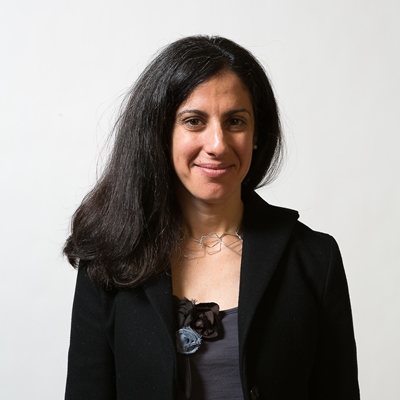Education
Why is there an A in STEAM?

The traditional arts have found their niche among test tubes, calculus and computers. The STEAM teaching model is coming to the classroom to develop students’ full potential.
Science, technology, engineering and mathematics. These are popular disciplines known as STEM. They are also cross-cutting skills that we should hone, as they help us understand and leverage machines. Lately, the acronym STEM has been given an A for arts to become STEAM.
What’s a future engineer doing with a guitar in their hand? What’s the point of introducing traditional arts into innovative STEM? Actually, STEAM is a new approach to teaching these subjects that aims to fulfill students’ full potential.
What is STEAM?
The STEAM model is an educational approach that combines STEM disciplines with the arts to help students develop skills such as creativity and critical thinking. It encourages students to engage actively and develop keenness of the STEM disciplines.
Talia Milgrom-Elcott, founder of 100Kin 10—an initiative that has trained and inspired 100,000 STEM teachers—explains what the A in the acronym means: “It reflects a growing effort to integrate the arts into the way we teach science, technology, engineering and math. When the arts are part of STEM, STEM comes alive and connects with many more students.”
An experiment as simple as splashing paint on a wall with a centrifuge to study physics makes all the difference in engaging a student in STEAM disciplines. “There are many ways to bring STEM concepts to life through art. And when we do that, we can interest students who might not yet be overly excited about these disciplines,” adds Milgrom-Elcott.
The three big advantages of STEAM
Awakening a calling in students who are not initially attracted to science or technology is one of the great advantages of the STEAM model. It is also the key that will open the doors to develop their enormous potential: the European Commission forecasts that 4.3 million researchers and engineers will be needed to fill as many vacancies by 2030.
For Talia Milgrom-Elcott, there are currently too few students who feel inspired and supported in the STEM environment. “The arts have long been a haven for those who were excluded from other occupations for various reasons. So, adding the arts into STEAM could open doors for students who often turn away from STEM disciplines.”
For this expert, the second major advantage of STEAM has to do with the power of the arts to bring out creativity and what is known as design thinking. “Both help to conceive technological products and science that are more dynamic and user-friendly,” she points out.
Third, there is the trajectory of provocation and disruption that has accompanied the arts almost since a new graffiti appeared in the caves of Altamira. This characteristic can also do a lot for STEM disciplines. “Is there any better frame of mind to look for than new disruptive technology that will lead to new progress?” asks Milgrom-Elcott.
The STEAM connection and the Leonardo effect
The workshop of an artist named Brunelleschi in 15th century Florence represents a success case of the STEAM frame of mind to which Talia Milgrom-Elcott alludes. There, a young Leonardo da Vinci not only learned how to create a work of art like the copper ball that crowns Florence’s Duomo, but he also took notes on the mechanisms needed to hoist it 100 meters above the ground.
Indeed, the arts are intimately linked with science, engineering and technology, as demonstrated by the extensive work of the Florentine genius. Along with such painting highpoints as La Gioconda, Leonardo studied the perfect proportions of the human body in the Vitruvian Man and even conceived the great-great-grandparents of today’s helicopters and parachutes.
This STEAM connection has been studied for longer than you might think. According to Dorothy Marcic, playwright and professor at Columbia University and creator of musicals such as SISTAS and RESPECT, we are not the first to seek this intimate link between science and the arts.
“In Ancient Greece, during the 6th century BC, the mathematician Pythagoras wrote about the music/harmony of spheres. He described the proportions that exist in the motion of the Sun, the Moon and planets as a kind of music. Later, in the 15th century, the astronomer Johannes Kepler went further. He said that music, rather than to be heard, was to be listened to by the soul,” stresses Marcic.
STEAM in practice
When it comes to bringing STEAM down to earth, it is useful to look for what the arts and sciences have in common. “Studies suggest that learning to play a musical instrument helps students solve complex math problems better than those who do not. Both music and math use patterns,” says Dorothy Marcic.
There are many ways to use arts such as music to support students to improve their performance. “Students can look for songs about topics such as fairness, goal pursuit, frustration, family dynamics, or hard work and then write about the deeper meaning of those songs. This teaches them pattern examination. This assignment is a kind of scientific inquiry that, again, brings music and science together.”
This type of dynamic is becoming more and more widespread in the world of education. “We are seeing more and more programs and initiatives that integrate the arts into STEM learning,” says Talia Milgrom-Elcott.
She cites two examples: first, the use of wearables such as imagiCharm, a Bluetooth pendant that encourages teenage girls to program changes to the pendant’s color and shape. Then, the Mind Over Music program of the Phoenix Symphony Orchestra (United States), whose musicians help teachers integrate music into their STEM teaching to improve their students’ performance in science or mathematics.
The STEAM opportunity in Spain
The STEAM approach is already seen in Spain as a catalyst to make STEM education appealing to segments of students who, until now, have not been very well represented in it. Thus, the Ministry of Education and Vocational Training has launched the STEAM Alliance for Female Talent, with the aim of fostering a calling for research and innovation among girls and young women.
In primary and secondary education, the implementation of STEAM teaching in the classrooms of schools and high schools still has a long way to go. As detailed in the report “The challenge of STEM vocations” by EY and DigitalES, primary school teachers in Spain take very few technology courses in college. Moreover, according to the same study, technology or ICT majors are rare in the universities where these teachers study.
In this context, teacher training represents an important opportunity to make the STEAM approach a reality in Spanish classrooms. Solving challenges such as curbing climate change, developing new generations of medicines or feeding the world’s growing population sustainably may depend on it.







